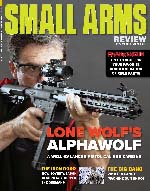Legally Armed: V22N9
By Johanna Reeves, Esq.
••• EXPORT CONTROLS UPDATE •••
U.S. GOVERNMENT PROPOSES TRANSITIONING CERTAIN FIREARMS AND AMMUNITION FROM ITAR TO EAR
(This is the second of a two-part series.)
In my previous article, I reviewed the U.S. Government’s proposed rules to transition most firearms and ammunition away from the controls of the U.S. Department of State to those of the Department of Commerce. In this installment, I will examine the potential impact the proposed transition rules will have on the firearms and ammunition industries and review the objections raised by certain politicians, the anti-gun community and international human rights groups.
I. Impact on Firearms and Ammunition Industries
Of course, the proposed transition rules will have a dramatic impact on the way U.S. businesses conduct their export operations. It will be tempting, especially for companies who have known nothing but the seemingly unyielding restrictions of the State Department’s International Traffic in Arms Regulations (ITAR), to think the Commerce controls over exports are easier, friendlier or will mean fewer restrictions on how U.S. companies interact with their foreign partners and vendors. While in the long run many benefits may emerge from the transition, industry must exercise extreme care in how it adjusts its operations under the new rules, once they become final, so as to avoid the potential compliance pitfalls, some of which I address here.
Specially Designed
A critical concept in the proposed transition rules is the term, “Specially Designed.” Both the State Department’s ITAR and Commerce Department’s Export Administration Regulations (EAR) use this term to remove the catch-all controls currently present in the U.S. Munitions List (USML) Categories I, II and III and to designate what parts, components, accessories and attachments are subject to either the ITAR or the EAR. As the revisions to USML Cats. I, II and III are intended to make each category a positive list that includes only those articles warranting control under the ITAR, “specially designed” is an important qualifier that helps establish a bright line between those articles subject to the ITAR and those subject to the EAR.
In preparing for the transition to EAR controls, industry...

This article first appeared in Small Arms Review V22N9 (November 2018) |
| SUBSCRIBER COMMENT AREA |
Comments have not been generated for this article.



